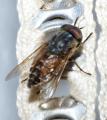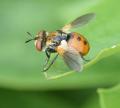Diptera.info :: Identification queries :: Diptera (adults)
Who is here? 1 guest(s)
|
Bombiliidae, Exhyalanthrax muscarius? From Rhodes >Thyridanthrax lotus by P. Alvarez
|
|
| piros |
Posted on 19-11-2015 21:07
|
|
Member Location: Szeged, Hungary Posts: 1763 Joined: 04.01.12 |
Again, found near Faliraki, middle of June, 2015. To me, itt looks similar to Exhyalanthrax muscarius. Can someone confirm or correct this ID? Thanks in advance! Greetings, Henrik piros attached the following image: 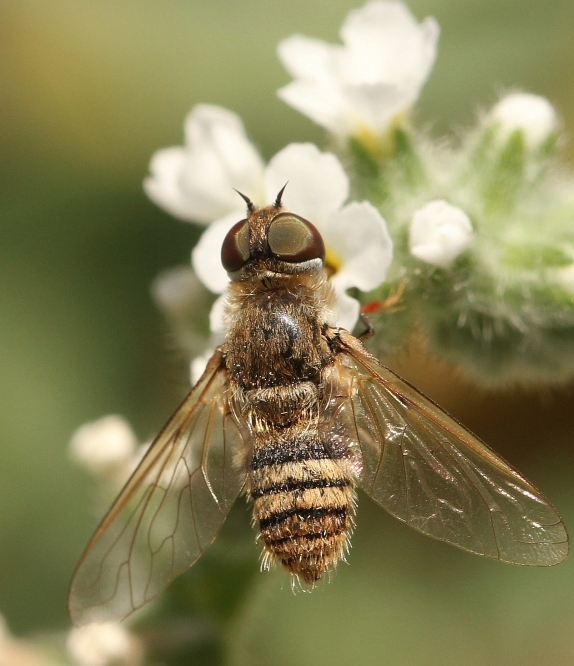 [197.87Kb] Edited by piros on 26-11-2015 18:52 |
|
|
|
| piros |
Posted on 19-11-2015 21:07
|
|
Member Location: Szeged, Hungary Posts: 1763 Joined: 04.01.12 |
2.
piros attached the following image: 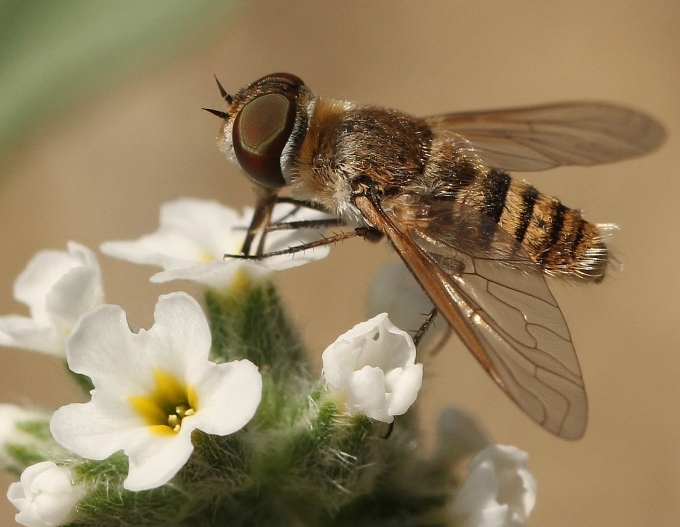 [192.86Kb] |
|
|
|
| piros |
Posted on 19-11-2015 21:08
|
|
Member Location: Szeged, Hungary Posts: 1763 Joined: 04.01.12 |
3.
piros attached the following image: 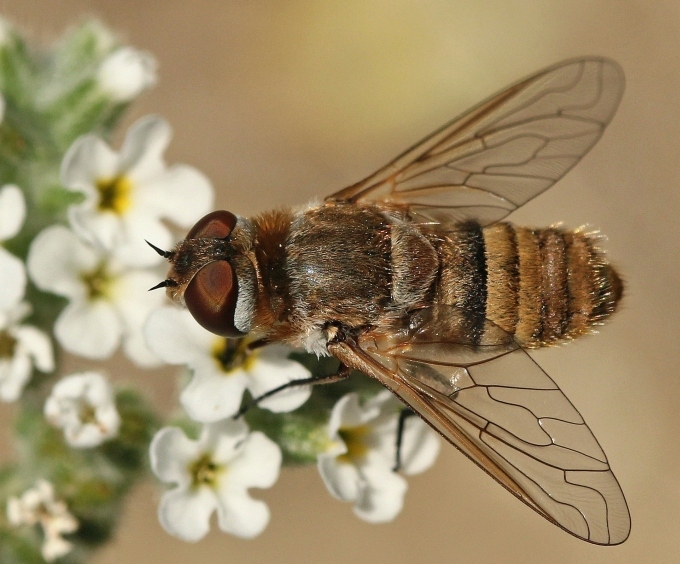 [197.54Kb] |
|
|
|
| piros |
Posted on 24-11-2015 19:06
|
|
Member Location: Szeged, Hungary Posts: 1763 Joined: 04.01.12 |
One more chance? |
|
|
|
| Piluca_Alvarez |
Posted on 25-11-2015 11:59
|
|
Member Location: Madrid, Spain Posts: 2431 Joined: 06.11.10 |
Hi again, Henrik  Well, to me this is not Exhyalanthrax muscarius... Antennae look wrong for Exhyalanthrax (too 'narrow' and long and differently shaped), I miss the lateral whitish bands of mesonotum and whitish toment on scutellum of E. muscarius. Besides, the abdominal pattern is a bit different (good mixture of golden, white and black bands in E. muscarius). See in the attachment a picture of the typical Spanish E. muscarius  Unfortunately, your creatures are unknown to me (as expected). But... I have gone through my old keys and they take me directly to a certain Thyridanthrax lotus... which happen to fit your flies (whitish tranverse mesonotal band at level of basicostas, pale wings with yellowish coloration on basal venation, perfect abdominal pattern... and it is present in Rhodes!!  I have a feeling your two last pictures (at least) are this species!  The first picture is difficult to tell as the fly looks too tatty and trying to key it might be misleading. I suggest to leave it as a possible T. lotus. I shall have a look at your other Thyridanthrax as soon as I can (but no time today). It looks good for T. elegans at first glance but as I don't know which species are in Rhodes, it needs to be checked. |
|
|
|
| Piluca_Alvarez |
Posted on 25-11-2015 12:00
|
|
Member Location: Madrid, Spain Posts: 2431 Joined: 06.11.10 |
Oops, the picture didn't upload!  Let's try again... Let's try again...
Piluca_Alvarez attached the following image:  [137.66Kb] |
|
|
|
| piros |
Posted on 26-11-2015 16:47
|
|
Member Location: Szeged, Hungary Posts: 1763 Joined: 04.01.12 |
Thank you very much, I greatly appreciate your continuos help! Not many Thyridanthrax spp have hyaline wings, so I completely forgot about them while searching for the ID of this sp. But I learned something about the importance of antennal shapes... Anyway, Thyridanthrax lotus is a more exciting sp. than Exhyalanthrax muscarius  I attach a not very good picture of a fly, which, based on your picture, might really be E. muscarius  Kind regards, Henrik piros attached the following image: 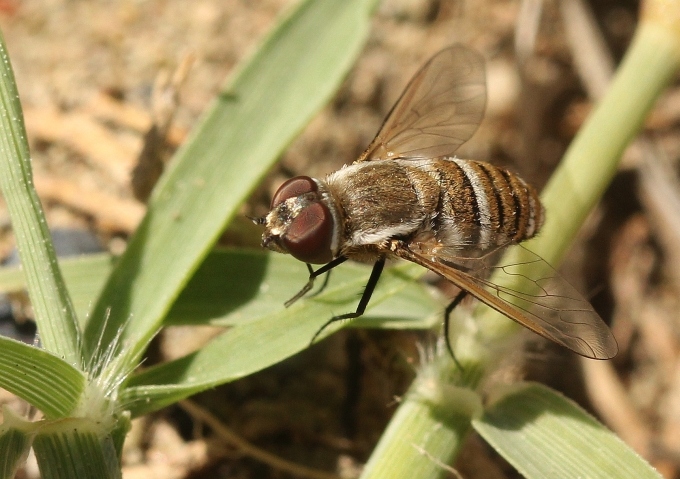 [195.09Kb] Edited by piros on 26-11-2015 21:28 |
|
|
|
| Piluca_Alvarez |
Posted on 26-11-2015 19:12
|
|
Member Location: Madrid, Spain Posts: 2431 Joined: 06.11.10 |
Henrik, I totally agree with you: E. muscarius for the last one  I already have had a look at the other one. I told you it looked good for T. elegans but I wanted to say T. perspicillaris, not T. elegans  That one isn't so easy That one isn't so easy  |
|
|
|
| piros |
Posted on 26-11-2015 21:34
|
|
Member Location: Szeged, Hungary Posts: 1763 Joined: 04.01.12 |
Wow, thank you again!  Could you, please, breafly describe the difference between T. elegans and T. perspicillaris to me? (So that I won't bother you with these spp again Could you, please, breafly describe the difference between T. elegans and T. perspicillaris to me? (So that I won't bother you with these spp again  ) ) |
|
|
|
| Piluca_Alvarez |
Posted on 26-11-2015 21:55
|
|
Member Location: Madrid, Spain Posts: 2431 Joined: 06.11.10 |
Hi again, Henrik  Better with images... they speak volumes  Thyridanthrax elegans: dark tomentum on the occiput, one complete single pale band on abdomen and big hyaline pannels on the wings. Piluca_Alvarez attached the following image:  [176.14Kb] Edited by Piluca_Alvarez on 26-11-2015 21:56 |
|
|
|
| Piluca_Alvarez |
Posted on 26-11-2015 22:00
|
|
Member Location: Madrid, Spain Posts: 2431 Joined: 06.11.10 |
And Thyridantrax perpicillaris: pale pannels on wing much reduced; two pale incomplete bands on abdomen, white tip to the abdomen and... yellowish palpi!! Beware: there is a very similar species, T. fenestratus, nearly impossible to separate from it in pictures. This one has black squamma alaris (imposible to see in a picture in the wild) and black palpi. The palpi are the clue!!  Hard work to shoot when they are feeding and get them in frontal view, but it is worth the effort! Hard work to shoot when they are feeding and get them in frontal view, but it is worth the effort!  By the way, your other Thyridanthrax is related to T. perspicillaris but it isn't that species, for sure. Hope to manage to ID it, but won't be easy... Piluca_Alvarez attached the following image: 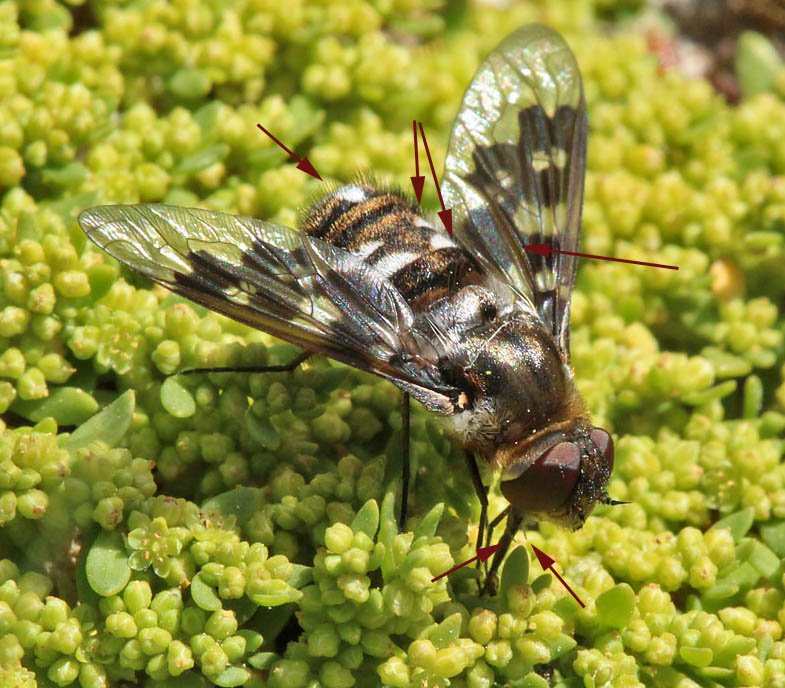 [147.38Kb] Edited by Piluca_Alvarez on 26-11-2015 22:05 |
|
|
|
| piros |
Posted on 27-11-2015 15:55
|
|
Member Location: Szeged, Hungary Posts: 1763 Joined: 04.01.12 |
Again, thanks a lot for your detailed explanation! Yes, I can see now that "my" Thyridanthrax is a different sp! Kind regards, Henrik Edited by piros on 27-11-2015 15:57 |
|
|
|
| Jump to Forum: |









